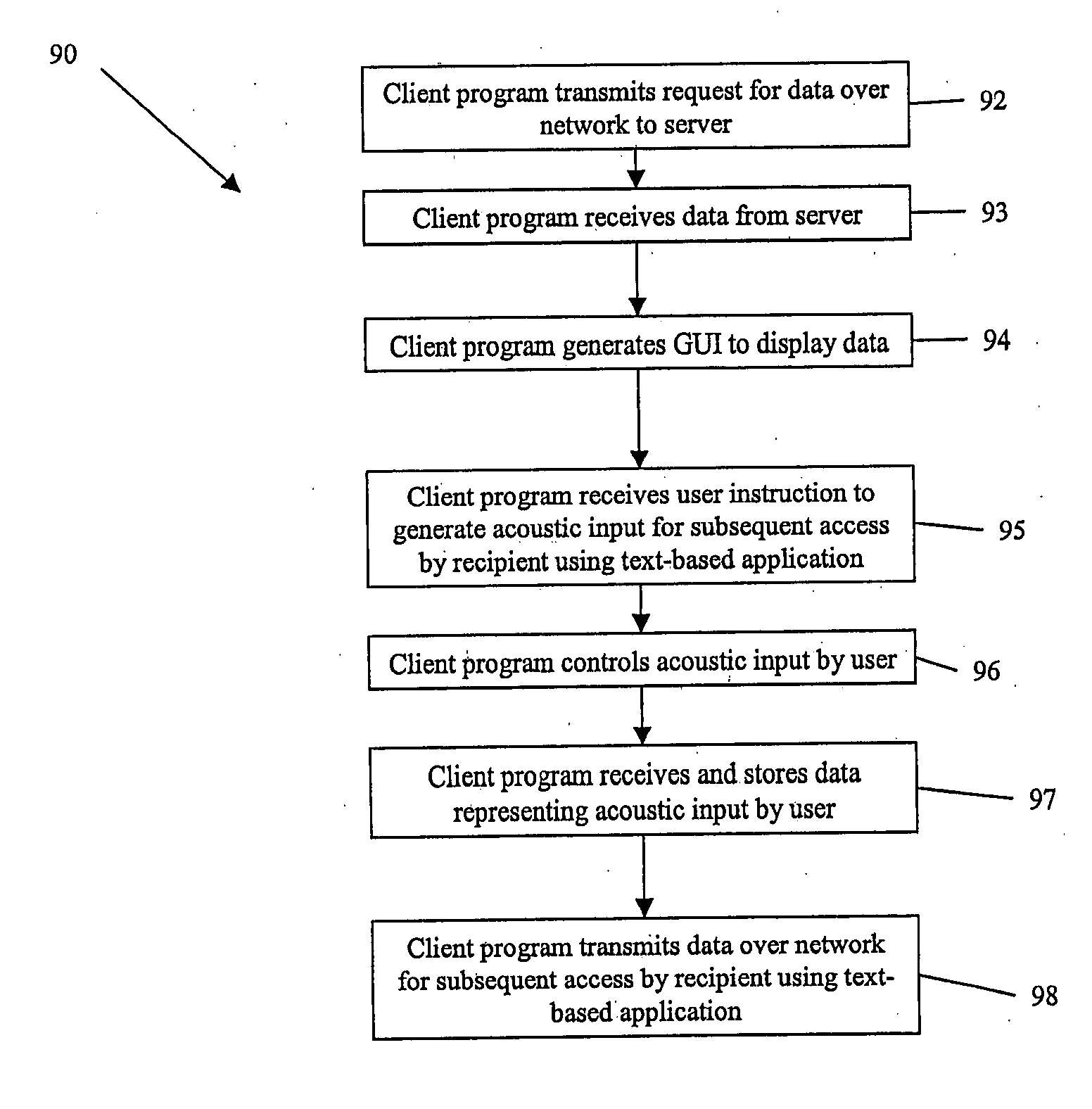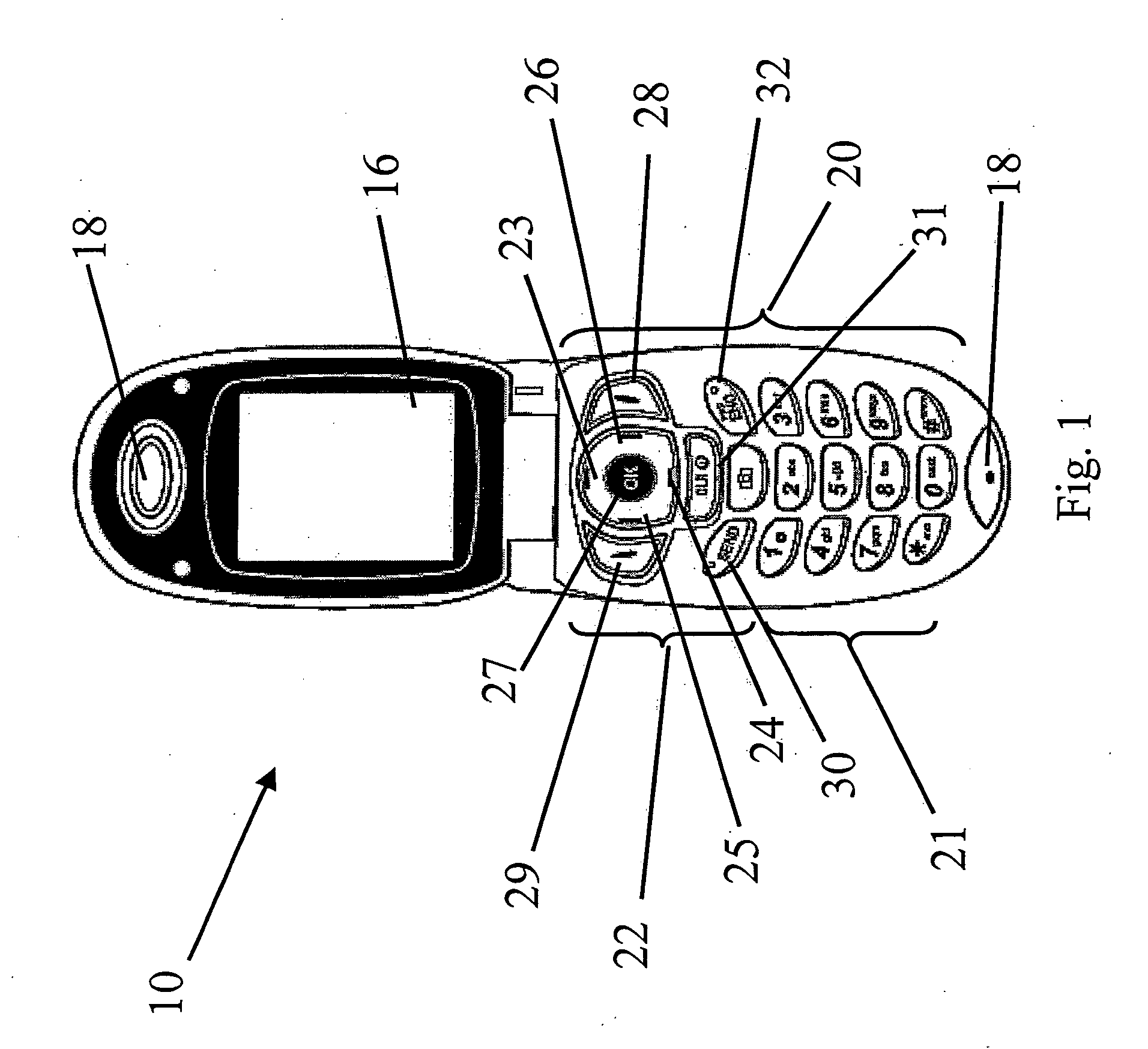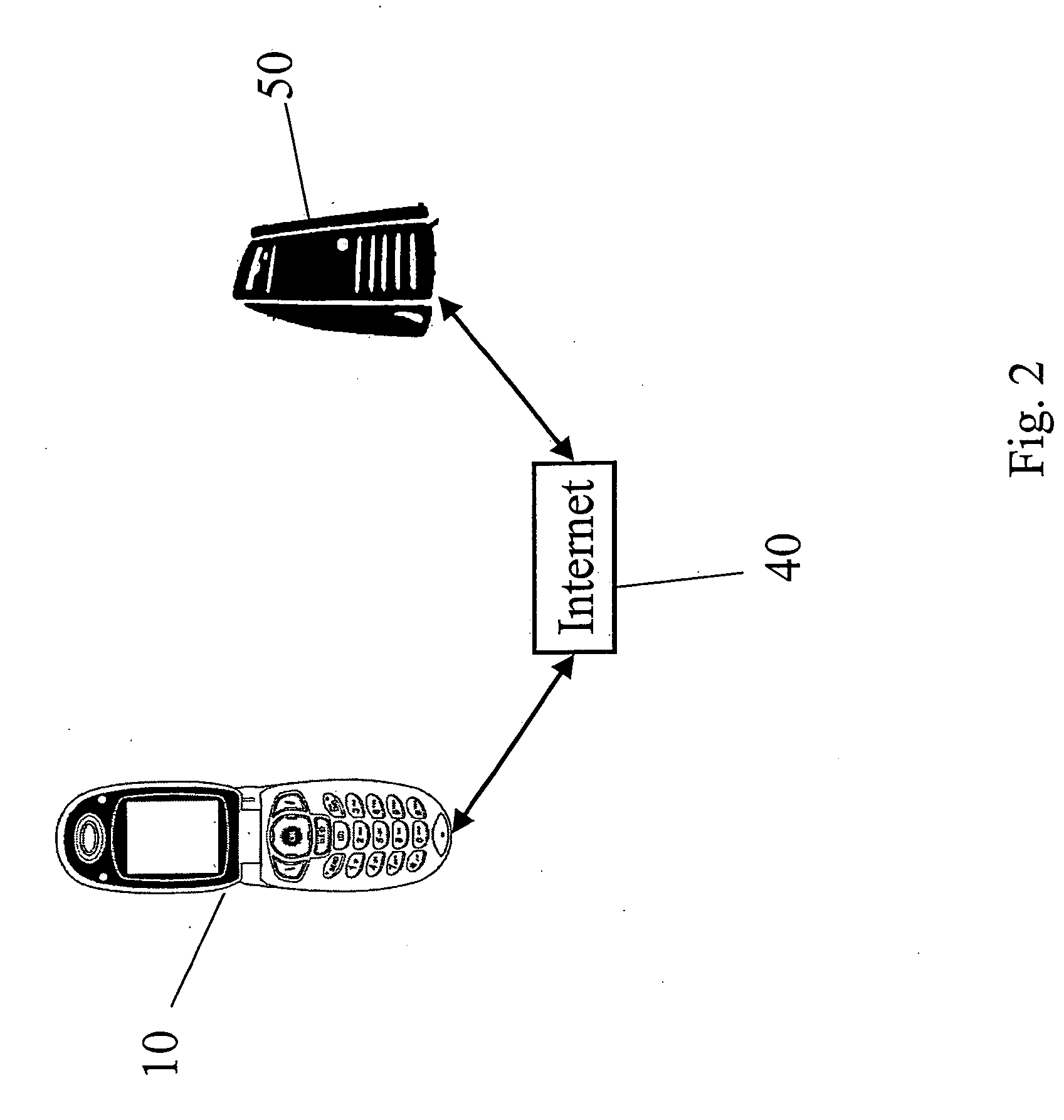Methods and systems for conducting remote communications
a remote communication and method technology, applied in the field of mobile phones and handheld computers, can solve the problems of cumbersome user manipulation, large display and keyboard size, and relatively bulky laptop computers, and achieve the effect of convenient device transportation
- Summary
- Abstract
- Description
- Claims
- Application Information
AI Technical Summary
Benefits of technology
Problems solved by technology
Method used
Image
Examples
Embodiment Construction
[0048]FIG. 1 shows a cellular telephone or phone 10 configured in accordance with the present invention. The cellular phone 10 is an exemplary vehicle for the present invention, however, the present invention is not limited to cellular phones, and is compatible with any conventional mobile communications device including a pager, PDA, handheld computer, smart phone, wearable computer, a laptop, or some other portable device as is known to those skilled in the art or hereinafter developed and adaptable for use with the present invention. Phone 10 includes a memory in which is stored (locally) a client computer program (also called “client program” or “program”) 70 (FIG. 5). The memory can be of any variety appropriate for mobile electronics, such as read-only memory (ROM), programmable read-only memory (PROM), erasable programmable read-only memory (EPROM), random access memory (RAM), dynamic random access memory (DRAM), static random access memory (SRAM), non-volatile random access ...
PUM
 Login to View More
Login to View More Abstract
Description
Claims
Application Information
 Login to View More
Login to View More - R&D
- Intellectual Property
- Life Sciences
- Materials
- Tech Scout
- Unparalleled Data Quality
- Higher Quality Content
- 60% Fewer Hallucinations
Browse by: Latest US Patents, China's latest patents, Technical Efficacy Thesaurus, Application Domain, Technology Topic, Popular Technical Reports.
© 2025 PatSnap. All rights reserved.Legal|Privacy policy|Modern Slavery Act Transparency Statement|Sitemap|About US| Contact US: help@patsnap.com



